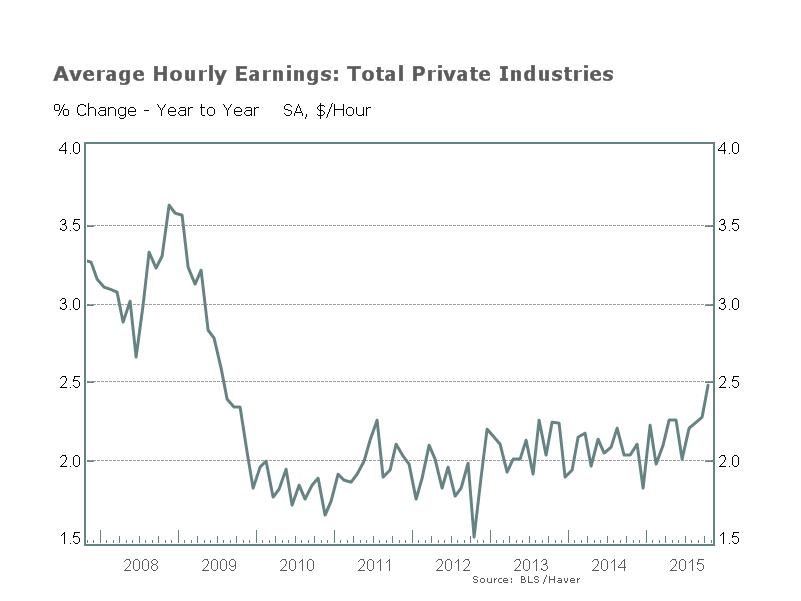There are more full-time jobs than before the Great Recession hit

WASHINGTON (MarketWatch) — It’s taken close to eight years, but the U.S. economy now has more full-time jobs than it had before the onset of the Great Recession.
After 185,000 full-time jobs were created in October, the total number of positions rose to 122.02 million. That tops the 121.61 million mark in December 2007, the start date for the recession.
The household report that includes information on full-time workers can be quite volatile, but it’s the third month in a row in which the number full-time positions has exceeded pre-recession levels.
The recovery has, despite popular conceptions, been led by gains in full-time positions. In the last 12 months, for example, 2.34 million full-time jobs have been added, while 507,000 part-time jobs have been lost.
That said, the jobs market was 83% full-time when the recession hit. It’s 82% now.
Pay growth also has been historically weak. It has taken six years for average hourly earnings to rise at the 2.5% year-over-year clip that it did in October.
U.S. creates 271,000 jobs in October as labor market heats back up
Unemployment rate falls to 5%, biggest wage gains since 2009


The economy generated 271,000 new jobs last month, with all but 3,000 coming in the private sector, the government said Friday. The surge in hiring topped the MarketWatch-compiled economist consensus of 180,000 new jobs.
Just as crucial, a long-awaited acceleration in wages might finally be underway. Hourly pay rose at the fastest year-over-year pace since the U.S. exited recession in mid-2009. Economists have been expecting a pickup in pay in response to a plunging unemployment rate and the creation of nearly 12 million new jobs in the past five years.
The unemployment rate, meanwhile, fell to 5% from 5.1%, marking the lowest level since April 2008. More people also entered the labor force in search of work, a sign that jobs are widely available.
“The October jobs report is a virtual blockbuster,” said Dan North, chief economist at Euler Hermes.
Also read: ‘Off the charts’ jobs report pushes December rate-hike odds way up
The snapback in hiring erases worries about a softening labor market after job creation suddenly slowed in August and September. As it turns out, hiring was also a bit stronger in those months. Employment gains were a combined 12,000 higher than previously reported, the Labor Department said.
The latest employment report also offers concrete evidence the U.S. remains on a solid growth path despite turmoil in the global economy and tougher times for some domestic industries such as manufacturing and energy.
The Fed is prepared to raise its benchmark short-term rate for the first time since 2006, and the October jobs report will bring policy makers to the precipice. Top officials won’t meet again until after the November jobs report, however, so the Fed can wait for more confirming evidence
U.S. stocks barely moved, while yields on Treasurys edged higher.
Inside the report
The rebound in hiring in October was driven almost entirely by companies that offer services such as software design, banking, health care, shopping and dining out.White-collar businesses added 78,000 profession jobs. Health care added 45,000 positions. Retailers took on 44,000 new workers, and restaurants hired 42,000 people.
Builders also beefed up employment by 31,000, reflecting an upturn in construction over the past year.
The only two industries that continue to struggle are energy and manufacturing, reflecting the diverging fortunes of companies that produce goods and those that offer services.
The labor market as a whole, however, is still the healthiest it’s been in years. The U.S. has added an average of 206,000 jobs a month in 2015 and it’s on track to create more than 2 million for the fifth year in a row. Job openings are at a record high and layoffs are near a four-decade low.
Against that backdrop, the slow pace of wage growth has puzzled economists. But now the tide might be starting to turn.
“It’s too soon to conclude that wage gains may accelerate meaningfully in the near-term, but the dwindling of the ranks of the unemployed is certainly causing increased competition among employers to hire skilled workers,” said Jim Baird, chief investment officer at Plante Moran Financial Advisors.
As a result, the number of people who can’t find work or who can only get part-time jobs continues to shrink. The so-called U6 unemployment rate that takes those people into account dropped to 9.8% in October — the first time it’s fallen below 10% since May 2008.
The labor market is still not fully healed, however. Some 15.6 million Americans who want a full-time job can’t find one, an unusually high number after more than six years of economic recovery.
The percentage of able-bodied people 16 or older in the labor force also sits at a 42-year low. The labor force participation rate was unchanged at 62.4% in October.
No comments:
Post a Comment